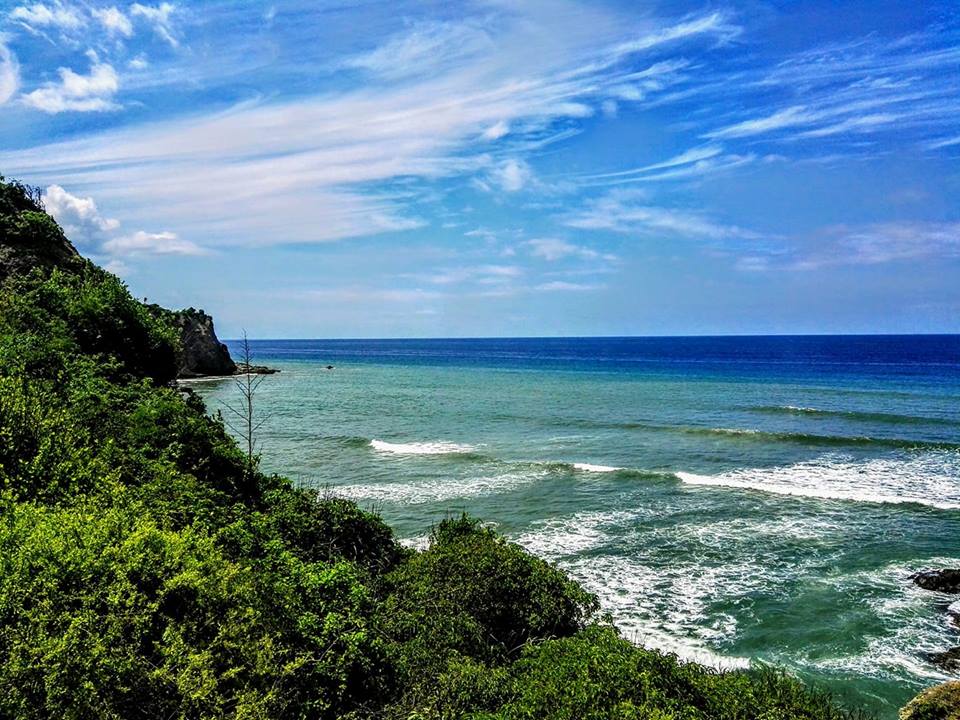Secret paths on Ecuadorian coast for real adventurers

Visiting South America is an experience that every one of us must try to have at least once in a lifetime because this continent is so different from anything else in the world. Among all the naturally beautiful countries in Latin America, Ecuador is the most bio-diverse on this continent. The stunning landscapes that this country offers vary from pristine miles long beaches, Amazon rainforest, the Andes, and of course, the famous Galapagos Islands. What’s extremely interesting about Ecuador is its diverse coastal region that is everything but “just a beach”.

The sandy beaches along the Pacific Ocean join with majestic cliffs in some parts and with thick jungle areas in other parts of the shoreline. If you are a beach lover, yet someone who likes to spend time in virgin nature of the jungle, then you have two in one here.
The magical Ecuadorian coast is a great place to be, no matter what your travel tastes are. Look at it this way: you can spend half of the day within walking distance of a jungle environment with its amazing waterfalls, giant blue butterflies, and monkeys and then spend the afternoon on the beach with a cold Cuba Libre in your hand. Sounds like a good plan, right?
Between the provinces of Santa Elena and Manabi, there is a small part of the coast that’s completely wild and virtually unknown to tourists and is not even visited by most of the local people. But, with the right company (read nature fanatics and explorers), everything is possible, and you will get to see the most secret paths that the Ecuadorian coast hides. Getting off the bus right on the border between the two provinces, on the left side of the road (Ruta del Sol) there is a small path hidden among the thick vegetation that leads to a labyrinth of surprises.

The first thing you see from the beginning of the path is a lush-green hill, tall grass, and the ocean in the background. As you start walking in the tall grass, going downhill, you must be careful not to scratch yourself on the plants, so make sure you wear long pants. As you descend through the wild grass, the soil changes and all of a sudden your feet will get stuck in mud, which comes as a surprise. Then, the jungle part starts. Thick, dark, and humid forest, with hundred-year-old trees, spiders, snakes, insects, butterflies, and howling monkeys. If you have a hammock, bring it with you because you can make a stop and lie down between the trees for a while.

The moment when you finally get out of the jungle, you will face a stunning view of the Pacific Ocean. If you keep descending, you will find a rope that will take you to the inside of a narrow canyon with a small river running through it. After the exhausting walk, cooling your body off in a tiny waterfall is a real reward.

Walking on the inner walls of the canyon and following the small river, you will get to a cliff and see the river fall directly into the ocean. This view is absolutely gorgeous and comparable to anything else you’ve ever seen. The best part is that the rope leads you all the way down to a hidden beach that’s only reachable at low tide. The place itself is stunning, but dangerous as well if you don’t judge the tides correctly. Other than that, it’s a hell of an experience that everybody who visits this region must live.
Good luck and stay safe!
If you have any comments then please drop us a message on our Outdoor Revival Facebook page
If you have a good story to tell or blog let us know about it on our FB page, we’re also happy for article or review submissions, we’d love to hear from you.
We live in a beautiful world, get out there and enjoy it. Outdoor Revival – Reconnecting us all with the Outdoors.
